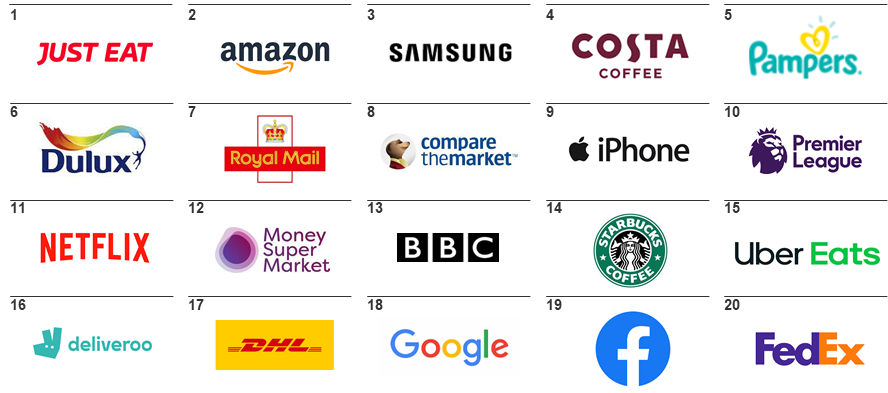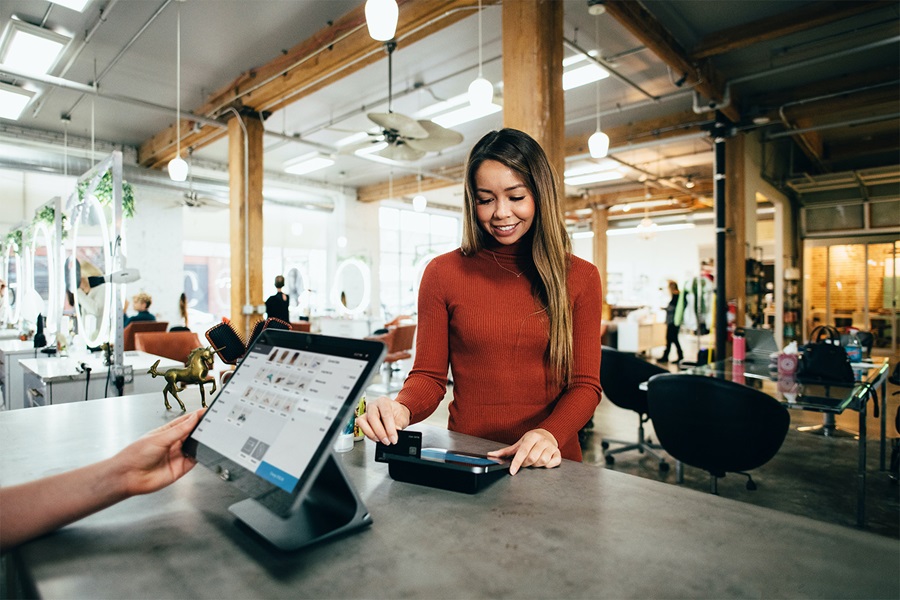Every year, Kantar reveals the Top 100 Global Most Valuable Brands. The shifting dynamics of this elite league table provide an important lens on brand success. This year analysis of the brand value drivers of 11,000 brands reveals four key fundamentals at the heart of value growth:
- A superior experience across all branded touchpoints
- Well-designed products and services
- Convenience that fits well into consumer lives
- Memorable and effective communications
So why are we calling out experience? Opportunity. Kantar’s UK BrandZ database shows that only 4% of brands in the UK are felt to deliver an exceptional experience that acts as a driver of brand value*. This includes ‘digital’ disruptors such as Just Eat and Amazon, but also Pampers, whose functionally superiority adds great value to sleep deprived parents. Despite very different categories, all the brands in this exclusive list deliver an experience that has the customer at the heart, meets their needs, and delivers in the moments that matter most.

Figure 1: UK Top Performers on Experience Delivery Calculated from ‘Experience Uniquely’ Index using BrandZ data
How can you give yourself the best opportunity to be in that exclusive group, and seize some competitive advantage? These three questions will start you on the right path...
1. What’s your distinctive and ownable brand experience?
Many brands offer a functionally consistent, ‘good’ experience, but few offer something that is truly owned and distinctive.
The strongest brand experiences not only look/taste/sound the same, they are also built to create a consistent feeling that aligns authentically with the meaningful difference they bring to the world. Whether it’s the inclusive, warm welcome that a visit to Starbuck’s promises, or the quick satisfaction of efficiently and effectively solving problems ‘from A to Z’ that comes with an Amazon purchase, the brands that are really winning here have crafted a distinctive offer and experience around a clear emotive territory.
Costa and Starbucks both appear in the UK Top 20 list of brand experience performers. Both brands excel at providing a functionally consistent coffee experience with an arguably substitutable offer, but the experience they each offer is distinct. Starbucks offers straightforward inclusivity, albeit at a premium price, while Costa is far more cosy and intimate, sharing their love of coffee with you (see figure 2).
When exploring ways to create a signature experience, consider how you want to come across as a brand and, importantly, how you want to make people feel. Having this clarity helps shape a clear customer vision and guides the delivery of a clearly understood emotive benefit. When this is coupled with an effective means to listen to consumers, you are well set to optimise your experience effectively.

2. Are you tackling gaps between brand promise and experience?
At this point you may be thinking about the role of brand communications. Aren’t they the way we build our brand? Partly. Kantar analysis of the touchpoint impact on Brand Equity shows that 25% of Brand Equity impact comes from paid media**. The remainder comes from experience, word of mouth and other related factors.
To understand why, and the implication for your brand, let us turn to an example. Samsung is a top 50 most valuable global brand, and occupies third place in our UK experience ranking. It harnesses the symbiotic relationship between brand promise and experience to build value. Their effective communications work by enhancing desirable associations in consumers’ minds ahead of usage. Their experience then validates these associations helping to strengthen brand equity and value.
We recently identified Samsung’s “Galaxy Buds Live” campaign as one of the most effective ads of 2021. This used a humorous story to creatively highlight key features of the brand experience related to design and noise cancellation. With a 44% rise in brand value since 2020 this suggests their formula of ‘coherence’ between brand promise and experience is working well.
If you are ever left scratching your head why your latest winning campaign doesn’t seem to be building your brand, explore the potential gap between the brand’s promise and delivery. A good first step is to connect Brand and Customer Experience teams in your organisation. Then seek to create a single source customer view which helps you optimise brand value at every consumer interaction.
3. Have you really optimised your digital journey?
We’re all familiar with the imperative to optimise your digital journey. It’s estimated that COVID-19 has accelerated progress in this space by 5 years. Many brands though are still falling far short of the standards that are necessary. Google has recently introduced a simple set of metrics to show what good looks like online – Core Web Vitals (CWV). Recent analysis by Kantar’s site speed practice showed of the Top 75 UK brands 92% failed Google’s Core Web Vitals. This is both a clear customer acquisition risk as well as a missed opportunity for brand building. The continued blurring of offline and online shopping and the growth of direct-to-consumer in FMCG makes avoiding these pitfalls universally relevant.
There’s no question spending time on evaluating how your experience supports brand building is time well spent. With only 4% of UK brands driving brand value this way, there’s a good chance there’s scope for you to harness the power of it too. These three questions should help you start your exploration.
Notes
*Source: Kantar BrandZ Database analysis of 480 UK brands in 2020. Unique experience defined via a composite measure analysing whether brands meet needs better, are unique, deliver on digital and cares for customers.
**Source: analysis of Kantar’s Global Connect Database 489 studies containing 7200 brands

